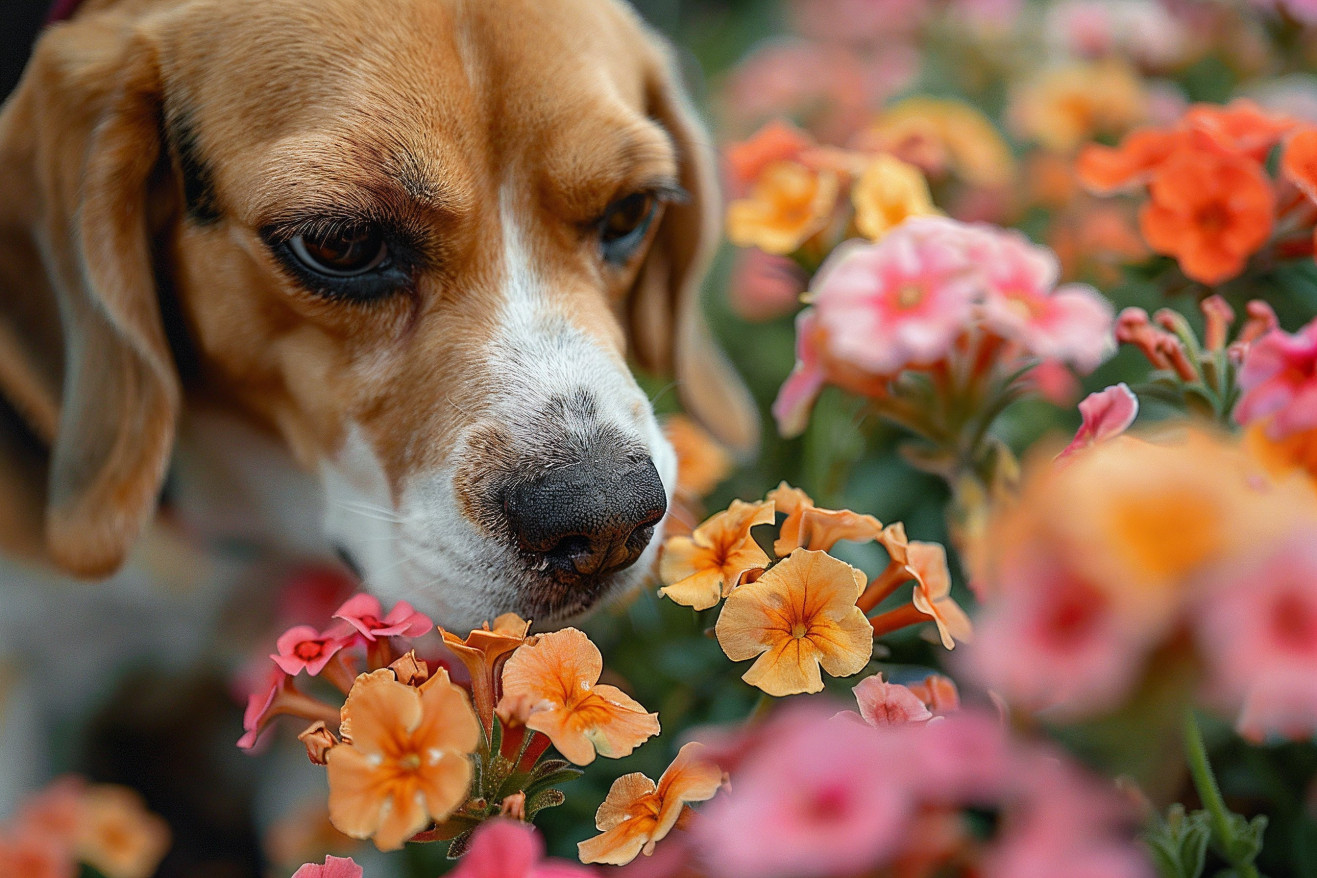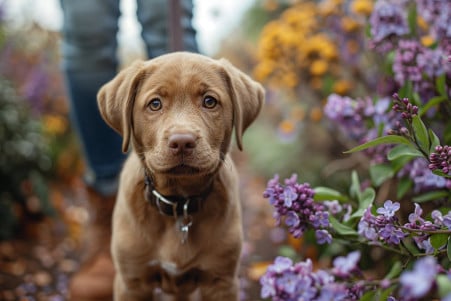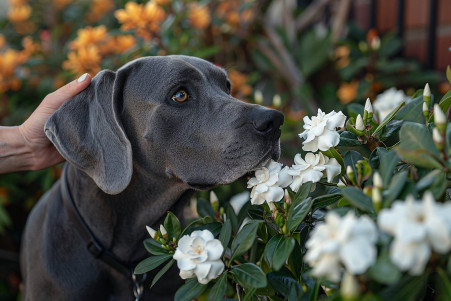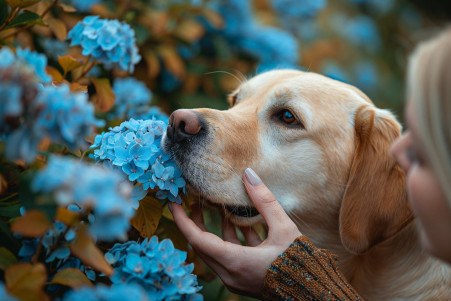Can Dogs Eat Lantana? A Vet Explains the Risks
6 May 2024 • Updated 6 May 2024

If you're a dog owner with lantana in your garden and a dog who loves to explore, you may be concerned about the potential danger of this popular flowering plant. Lantana is toxic to dogs and other animals when eaten due to the presence of several toxins, including lantadene A and B, which can cause a range of symptoms from vomiting and diarrhea to liver failure and, in the worst cases, heart issues.
Using veterinary case studies, data from animal poison control hotlines, and expert analysis, we explain exactly how dangerous lantana is for dogs. We cover the symptoms of lantana poisoning, the doses that could be toxic, what to do if your dog eats lantana, and how to keep your dog safe from this pretty but perilous plant.
Is lantana poisonous to dogs?
How to Spot the Toxic Lantana Plant
Lantana is a perennial shrub that grows to a height of 5-17 feet, according to the University of Florida's Center for Aquatic and Invasive Plants. It has four-sided stems that are sometimes prickly and rough, ovate leaves that can grow up to 6 inches long, according to the Florida Plant Atlas.
The small, brightly colored flowers are borne in clusters at the ends of the branches and change color as they age, going from white to pink or lavender, or yellow to orange or red, with darker colors indicating more mature flowers, according to the Miami Herald. The fruit is a round, fleshy drupe that starts out green and turns deep purple or black.
Two of the most important identifying characteristics are the plant's four-sided stems and the leaves that are wider at the base where they attach to the stem, unlike the leaves of native lantana species, which taper at the base, according to the University of Florida. These characteristics can help you distinguish the toxic lantana from other, non-toxic species. This is important because all parts of the plant are toxic to pets and children if ingested, according to Garden Design magazine.
Signs of Lantana Poisoning in Dogs
Consumption of lantana can cause a variety of gastrointestinal issues in dogs, including vomiting and bloody diarrhea, according to Lantana Poisoning in Dogs - Symptoms, Causes, Diagnosis, Treatment, Recovery, Management, Cost. More serious cases of lantana poisoning can result in paralysis, liver damage, and photosensitivity, according to Lantana Toxicity - HAHF.
Other signs of lantana poisoning include muscle weakness, difficulty breathing, and jaundice, according to Trailing Lantana is Toxic to Dogs 🐶. The severity of these signs will depend on the amount of lantana that was eaten and the dog's size and age, with smaller dogs and puppies being the most susceptible to lantana poisoning.
How Lantana Poisoning in Dogs Is Treated
If a dog has recently eaten lantana, the first step is to induce vomiting to get the plant out of the system. According to Lantana Poisoning in Dogs - Symptoms, Causes, Diagnosis, Treatment, Recovery, Management, Cost, this can be done by giving the dog 1 tablespoon of 3% hydrogen peroxide per 10 pounds of body weight, mixed with bread or food. The dog should then be taken outside and walked around to encourage vomiting.
Activated charcoal can also be administered to help reduce the absorption of the toxins in the body, as described by Lantana Poisoning in Dogs - Symptoms, Causes, Diagnosis, Treatment, Recovery, Management, Cost. It is important to provide supportive care, including IV fluids, anti-nausea medications, and a switch to a bland diet.
It is also important to watch for liver damage, as lantana poisoning can result in liver failure in more severe cases. Lantana Toxicity - HAHF explains that this may require medication or dietary interventions to help the liver heal. It is important to get the dog to a vet right away, especially if the dog is showing severe symptoms like paralysis, difficulty breathing, or jaundice.
How to Avoid Lantana Poisoning: Tips for Pet Owners
To avoid lantana poisoning, pet owners should first make sure that there are no lantana plants in any areas that their dogs can access, per Greg. When gardening, it's important to make sure that dogs are supervised and to discourage them from eating any plants, the ASPCA notes.
In addition, using physical barriers or fencing to keep dogs away from lantana in gardens can be helpful, the American Kennel Club explains. Training dogs to avoid eating plants or other greenery using positive reinforcement is another good way to keep them safe, per MB Vets.
Finally, pet owners should be mindful of the risk of toxicity when they're in new areas with their dogs, such as when they're traveling or hiking, where they may encounter plants that they're not familiar with. By being aware and taking steps to protect their dogs, pet owners can help prevent lantana poisoning.
Other Common Toxic Plants to Avoid
In addition to lantana, there are many other common household and garden plants that are toxic to dogs. The ASPCA includes lilies, azaleas, sago palms, oleander, and a variety of bulb plants on its list of toxic plants. The toxic principles and effects of these plants can range from vomiting and diarrhea to organ damage.
To make sure that dogs are safe, pet parents should always research plants before bringing them into their home or garden. The American Kennel Club and ABC Everyday both offer extensive lists of common toxic plants to avoid. Pet parents can also use the ASPCA's toxic plant list to look up potential risks.
With knowledge and planning, pet parents can help ensure that their dogs don't accidentally ingest any of the many common household and garden plants that are toxic to them. It's important to stay informed and stay on the lookout for potential risks.
Conclusion: How to Protect Dogs From Lantana
Lantana is a potentially dangerous plant that can cause illness in dogs. Knowing how to identify the plant and its symptoms of toxicity is important for pet owners. If you suspect your dog has ingested lantana, make sure to induce vomiting and seek veterinary care right away.
Preventative measures, such as supervision and barriers, are also important for avoiding poisoning. Always research plants before planting them in areas where dogs will be present.


